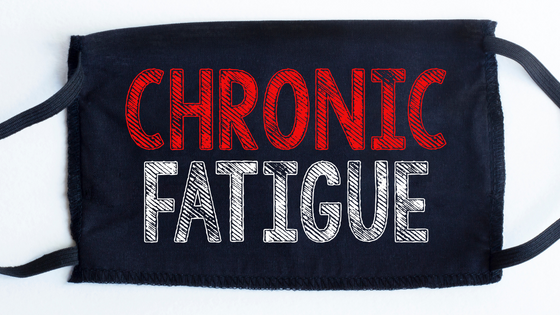We can define goals as objects of a person’s ambition or an aim at a desired result. Most of us have some goals set out for ourselves to improve our lives. We can relate your goals to personal or professional progress. Either way, without goals, there’s not much room for advancement and without the challenge of reaching a goal you’ve set for yourself, life would be stagnant. But the process in which we set goals for ourselves matters.
Although, you are responsible for whether you follow through with the goals you’ve set for yourself, how you set them has a hand in determining how successful you’ll be in achieving them. The term SMART Goals refers to a process in which you set the goals that will give you greater success.
SMART is an acronym that stands for Specific, Measurable, Attainable, Relevant and Time-Bound. The SMART goals method will help you with your organization, focus, and clarity with your goals. Research has shown that using the SMART goals method can save you time and simplify reaching your goals. SMART goals are easy to implement and can be used by anyone with the desire to improve their life by setting and achieving goals.
The SMART Goals Method of goal setting works because it lays each step out for you:
- The S stands for specific, meaning the goal needs to be clear and specific. When setting a goal for yourself, you must steer away from generalized statements. The more precise the goal is the better.
- M is for measurable. Measurable goals refer to tracking your progress. Your goal will be easier met if you can assess progress along the way, giving you more motivation and focus toward your ultimate ambition.
- Next, A. The A is for attainable. Although your goals should help stretch you outside of your comfort zone and push you to the next level, it’s important that the goals you set remain achievable.
- R, relevant goals are imperative to your success. This means that the goals you set should be important to you and aligns well with your life and other goals you have set.
- Finally, T, for time bound. Your goals should have a deadline to achieve them. This will help keep you on track and focused, and give you opportunities to celebrate your small wins along the way.
By implementing the SMART Goals Method, you will gain the ability to achieve your goals, faster and with a higher success rate.
How To Make Your Goals Specific
Specificity is crucial as it relates to mapping out the goals you set for yourself. Overly generalized goals will produce a lack of direction and ability to focus on what’s important. Goals that are too vague will end up setting you up for failure.
Specificity is crucial as it relates to mapping out the goals you set for yourself. Overly generalized goals will produce a lack of direction and ability to focus on what’s important. Click To TweetFor example, let’s say you want to drink more water per day. “I will drink more water every day,” is far too general. Lack of specificity will enable you to make excuses. The wording doesn’t hold you accountable; it is not enough of a detailed plan to follow through with.
Instead, clarify the specifics. Answering some questions about your goal will pinpoint your intention and narrow down the specifics. You must answer what’s known as the “5 W’s” of basic information gathering; Who? What? When? Where? Why?
Answering these five questions will help you develop specific clarity and motivation towards your goal. Answer these five questions to draft your goal:
- Who will this goal involve?
- What exactly do I want to accomplish?
- When do I want to accomplish this goal?
- Where will you achieve this goal?
- Why is this goal important to me?
After filling in the blanks to the five information-gathering questions, your goal will look something like this: “I will drink 8 glasses of water every day – 2 glasses of water in the morning before breakfast, two glasses with lunch, two glasses after the gym and two glasses before bed to become healthier. This goal is specific and direct. It explicitly states what your expectations are for yourself and enables accountability.
Another example of a goal without detail and focus is “I will exercise more.” This goal is positive and relevant, however, it lacks specificity, and therefore it becomes a setup for failure. Answering the 5 w’s will provide the specifics you need to set meaningful, constructive goals that will give a higher rate of success in achievement.
After answering these questions, you will end up drafting a goal that sounds more like this, “I will exercise at the gym for 45 minutes, every weekday morning, before I go to work.” This statement is a detailed plan for what, where, how and when you intend to follow through with your plan. Its details will ensure a higher goal success rate than that of the first, vaguer statement.
S stands for specific, in the acronym, SMART goals. Drafting specific goals is the first step in coming up with goals that stick and are successful.
How Are You Going To Measure Progress?
Measuring your progress for the goals you’ve set is the second part of the SMART Goals method. After all, you won’t know if you’re making progress or gaining on your goal without a way to measure it.
When progress is measurable, you can track how far you’ve come, keep focused and stay motivated by celebrating the small milestones you complete along the way. In order to facilitate assessing your progress, you’ll need a set of criteria for measurement of progress.
Similar to the Specific step used in SMART Goals, you will need to answer a few questions regarding your goal as a criterion for measuring progress data:
- How many?
- How much?
- What is the indicator of progress?
How many or how much refers to progress as an indicator of what success for your specific goal looks like. The indicator of progress signifies the way in which you decide to track the progress you have made. This varies significantly depending on the goal.
If it’s a business goal, maybe the indicator of progress is gross sales. Or it might be the number of pounds lost per week, if your goal is to get to a healthier weight. Tracking how far you’ve come within the goal is important because it will keep you focused on your ultimate goal. Motivation will be gained by the ability to celebrate the milestones of the progress you have along the way.
Using the same goal as above, to lose 10 pounds by exercising more. More specifically stated, “I will go to the gym to work out for 45 minutes every day weekday morning before work, in order to lose 2 pounds per week.” Now not only is the goal specific and clearly stated, but we have also added the quantity of measurement for the goal, 2 pounds per week. In this case the indicator of measurement would be the scale.
In the arena of business, an example might be, if the goal is, “I will build brand awareness through social media, to increase gross profits by 20% per month.” The quantity of measurement and the indicator is the profit increase in comparison to previous months.
Putting the SMART Goals Method to use has proven to produce a higher success rate for goal achievement. Measuring your goals is an important part of this process. When you track your progress, you will have the ability to stay more motivated toward your goal and keep a stronger focus.
Why Reaching for the Stars May Be un-Attainable
The A, in SMART Goals, represents attainable. When setting goals, be sure to choose a goal that is attainable – your goals should be within reasonable reach for you. Although the goals you set should stretch you out of your comfort zone and excite you, your goals should remain within reach.
If a goal is impossible to achieve your efforts are futile. It becomes unproductive to put your time and energy toward a goal that will never come to fruition. You will end up losing motivation and feel like giving up if you aren’t able to succeed or celebrate your milestones along the way.
Instead, be sure to set a goal that you can accomplish, this way you will keep focus and motivation, and have a chance of greater success. Along with your goal being attainable, be sure that when you draft your goal, it’s written in a way that allows you responsibility for your goal. You should state your goals in a way that gives you control over the outcome. No one other than you should be the subject of your goal.
You should state attainable goals with success in mind. For example, let’s say you feel that you would benefit professionally from reading more books that pertain to your business. So, your goal might be, “I will read a business-related book every night before bed for 20 minutes, with my goal to be to read one business book per month, for 6 months.”
This goal is attainable because what you’re asking of yourself is reasonable and achievable. The goal also only involves one person, you, who follows through to ensure success.
Another way to assist attainable goals in being successful is through setting milestone goals. Milestone goals are small goals that you can set along the pathway to your goal.
For example, in the instance above, a milestone goal could be to check in with yourself once a week. Checking in on your own accountability is a great way to stay on track. If you have followed through with your goal for the week, in this case, read your business book for 20 minutes every evening, you will know you are making progress toward your goal.
As we already know, tracking or measuring your progress helps secure a greater success rate for your goal. Keep your goals challenging yet attainable and you will be on your way to being successful with your goals.
Keep it Relevant – What’s Your Why?
In goal setting, “your why,” refers to the relevance that the particular goal has in your life. Relevance is the R, in the SMART Goals Method of goal setting. This part of setting a goal for yourself is crucial because it’s about ensuring that the goal is important to you.
There’s little point in putting time and effort into a goal that truly doesn’t matter to you. Goals should drive us forward toward something significant. The relevance of the goal you are setting should also align well with your other life plans.
Decide the relevance of a goal by answering a few questions pertaining to the goal and your current life. Questions like:
- Does this goal seem worthwhile? Is the tradeoff of time and effort worth the result?
- Does it align well with my other efforts and goals? Are other aspects of your life driving forward in the same direction?
- Is this the right time for this goal? Does this goal fit in with your personal goals? Does it make sense financially?
- Am I the right person for this goal? Is this goal attainable? Do I have the skills and ability to succeed in the goal?
Coming up with answers to these questions will help you determine the goal’s relevance in your life. Some of these questions are not necessarily straightforward, black and white. You will need to dig deep to answer some of these questions to find the real “why” of your desired goal, to know if it’s relevant enough to move forward.
An example of a goal relevant to one’s life might be for someone whose goal is to be promoted in their field, to take available online courses, to gain knowledge and experience of their desired position. This plan is worthwhile because it provides professional experience.
They offer the courses online, so you can take them at a time convenient for the subject. Online courses are affordable, so most likely they will make financial sense. The online courses will ultimately propel the subject forward, toward an even bigger goal, the eventual promotion.
Relevance of a goal is an important part of goal setting. Deciding if a goal is relevant helps you match your goals to the rest of your life, helps you know if the goal matters to you, and if the time is the right time to achieve the goal. Sometimes, one must truly examine themselves and their life to determine relevance of a desired goal.
Time to Set a Deadline
Deadlines are important motivators in goal setting, that’s why the T, in SMART Goals, refers to the term time-bound. Time-bound means the time you allocate for you to complete your goal. An obvious start and end date for your goals are a momentous piece of your goal-setting plan.
When you set start and end times for yourself, you are better able to stay on track, which gives you the ability to focus on your goal and gives you something to work toward. Mini-deadlines will help you keep up the motivation because you will celebrate your smaller successes along the way.
Deadlines will also help with time management, making your goal more easily accomplished. Managing your time well will help you allocate your time where needed, toward achieving your goal. Parkinson’s Law states that work will expand to fill the time allotted. So, unless you must carefully distribute your time, your goals may fall to the wayside and become overtaken by everyday tasks.
Time-bound goals have start and end dates. Setting a time frame for yourself in whom you expect to complete your goal, will give you a sense of urgency. Time-bound goals also keep you focused on the task you have laid out for yourself by helping prioritize your everyday tasks.
It’s easy to get caught up in the things we have to get done in life, work and family obligations often take over. Parkinson’s Law states that work will expand to fill the time allotted; meaning that other tasks will take over, if you let them. But, when the goal is time-bound, it helps keep the goal in the forefront, with a sense of necessity.
Mini-deadlines are another way that time-bound goals help ensure success. You can set yourself some smaller deadlines within your primary goal and reward yourself for those mini successes along the way. For example, let’s say your goal is to walk for 30 minutes, 5 times a week for 3 months, in the evening when you get home from work, to get healthier. The deadline here is 3 months.
An example of a useful mini-goal could be at the 1-week mark. If you check in with yourself every Friday evening and you have followed through with walking for 30 minutes every evening after work for that week, you have successfully completed your mini goal. If you allow yourself a small reward for achieving the mini goal, you will further solidify success.
Time-sensitive goals are an important part of the SMART Goals Method. Setting deadlines will increase your productivity and help ensure your success.
The Power Of Writing Your SMART Goals Down And Reviewing Them Regularly
Studies show that putting your SMART goals into writing and reviewing them regularly will increase your chances of success. In fact, some studies show that you are as much as 42% more likely to follow through with your goals if you write them down.
Writing your goals down will help you get a clear picture of your plan and what you want to accomplish. Logging your goals will also help motivate you to complete the tasks needed in order to succeed. Click To TweetWriting your goals down will help you get a clear picture of your plan and what you want to accomplish. Logging your goals will also help motivate you to complete the tasks needed in order to succeed. Frequently reviewing what you’ve written will aid in reminding you of your plan, as well as remind you of your “why,” in turn, boosting your motivation to keep progressing toward your goal.
Writing your goals down as you set them will help your brain encode the plan, further solidifying your goal. The mere act of writing an idea down makes it more likely you will remember it. This is the reason college students take notes in lectures, note taking provides a much higher probability of remembering the information.
Similarly, when you draft your goal in writing, you have a better chance of success. After writing out your goal, be sure to place it somewhere that you can see it easily. Places like on the fridge, on your phone, on a mirror, and at your desk are all excellent areas, where you can easily visually access your goal. Seeing the words you wrote out serves as a reminder and as motivation to continue with your efforts.
Not only will you be reminded of your goal by visually seeing the words written, you should also take the time for an active review of your goal. Regularly, actively reviewing your written goal will increase your chances of success.
An active review of your goal should include contemplating the reasons behind your motivation for the goal – your “why.” Thinking about the reasons you set the particular goal will boost your motivation by reminding you why the goal matters to you, why you set it and what you expect to gain from it. Reviewing your goal will aid in renewed purpose and incentive, ultimately bumping up your likelihood of success.
Countless studies that find that writing out your goals produces higher success rates. Placing the words you’ve written in an easily accessible spot and reviewing them often will also help ensure that you follow through with the SMART goals you set for yourself.
If you are looking for more tips and support, join me on my group page, The Village – A Natural HEALing Community, to get tons of information and tips to help you take your HEALTHY EATING and ACTIVE LIVING to the next level.
HEAL GOOD. FEEL GOOD. DO GOOD.
[/et_pb_text][/et_pb_column][/et_pb_row][/et_pb_section]





+leave a comment . . .